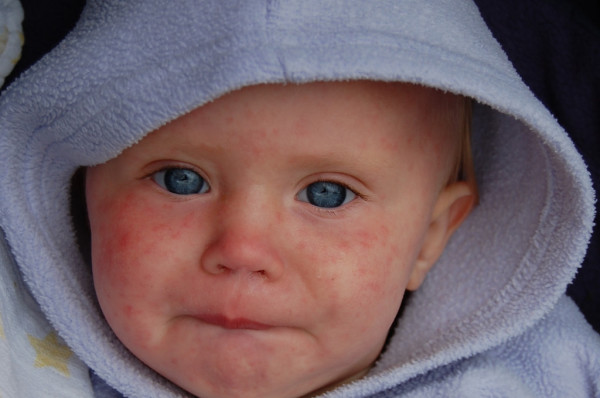Somebody recently told me about “chicken pox parties,” which used to happen after a kid got the chicken pox. Parents would bring their previously unexposed children to play so that they would also get chicken pox at a younger age where it was less severe, and later be immune. It’s herd immunity, although not the way we usually hear about it.
The words “herd immunity” generally get thrown around a lot during discussions regarding vaccines, particularly when the topic turns to people who refuse vaccinations. Just, what is herd immunity, and why does it matter?
What It Is
We’ve covered this briefly before, but herd immunity (or community immunity) is the concept that if enough people in the community are vaccinated and become immune to certain contagious diseases, those who are unable to be vaccinated–mostly infants, pregnant women, and individuals with weakened or compromised immune systems–can also be protected. Even with susceptible individuals, the spread of disease is limited simply because the majority of the population will not become infectious.
There is a fairly high threshold that must be maintained to protect the unvaccinated, a percentage that ranges from 75-95% depending on how infectious the disease is. If the percentage of the vaccinated population drops below this number, herd immunity is no longer as effective. It’s pretty simple; the more people in the community who are immune, the less likely they will get sick and spread disease to other susceptible individuals in the population. Just as you should stay home when you get sick so you don’t pass your germs on to everyone else.
However, some people are allergic to components of vaccines or have other health issue keeping them from being vaccinated. Every state in the U.S. allows these medical exemptions and most have religious exemptions, but some also allow personal belief exemptions.
Here’s where the problems usually arise.
Why It Matters
Let’s clear up some misconceptions first, with two reasons why some people don’t vaccinate their children.
- Vaccines cause autism. The 1998 paper published in the scientific journal Lancet citing the link between the Measles, Mumps, and Rubella (MMR) vaccine and autism has since been retracted from the journal and debunked by many different investigators. While it is true that autism rates are on the rise, it does not seem to be a result of increased vaccination.
- Vaccines do more harm than good. A review published in August of 2014 reviewing many common childhood vaccines (MMR, Hepatitis A and B, Polio, Diphtheria, etc.) states that although some vaccines have adverse effects such as febrile seizures, they are quite rare. Generally, side effects are not very severe.
With the use of vaccines, diseases like measles and pertussis (aka whooping cough) that used to be widely infectious became rare. In fact, measles was considered to be eliminated from the U.S. in 2000 due to efficient vaccination programs and quick outbreak detection. “Elimination” only means that the disease is no longer native to the U.S. but can still be brought in by individuals from other countries.
In 2014 alone, there were 644 cases of measles reported in 27 states, ten times as much as the previously reported average of 60 cases per year and the highest since 2000. Part of this is due to the fact that measles is still prevalent in many other countries and the more cases there are elsewhere, the higher chance that someone will bring it back to the U.S. There are other factors as well; the measles virus is still able to spread quickly in the U.S. through groups of unvaccinated people, and the majority of the cases in 2014 occurred among the unvaccinated. When the number of people getting vaccinated drops, the community falls under the threshold for herd immunity and puts those vulnerable individuals at increased risk of infection. There’s already been 105 cases of measles in 2015–due largely in part to the outbreak of measles at Disneyland–and many of the measles patients were unvaccinated.
Herd immunity, which is achieved when a majority of a population is vaccinated, can protect against diseases like measles and whooping cough.
Image Source: fstop123
Herd immunity, which is achieved when a majority of a population is vaccinated, can protect against diseases like measles and whooping cough.
Whooping cough also made a comeback a few years ago, with over 48,000 cases reported in 2012–the most cases since 1955. Most states reported a decline in 2013, but many cases have already been reported this year. California in particular is currently in a pertussis epidemic, with almost 10,000 cases this year. Pertussis is cyclical and epidemics occur every 3-5 years because of the waning immunity of the whooping cough vaccine, but many of these cases are also due to a decrease in the percentage of vaccinated children.
For the most part, vaccines are good early protection and decrease the chance of an individual getting seriously sick. The reemergence of diseases like whooping cough and measles that were previously under control with strong public health programs shows how important the concept of herd immunity is for the community. Herd immunity is supposed to help those who can’t receive vaccines or have difficulty fighting off infections and is heavily reliant on the fact that high percentages of the population must be vaccinated in order to protect those who are vulnerable. When you get vaccinated, you help yourself and others.
Feature Image Source: Dave Haygarth










